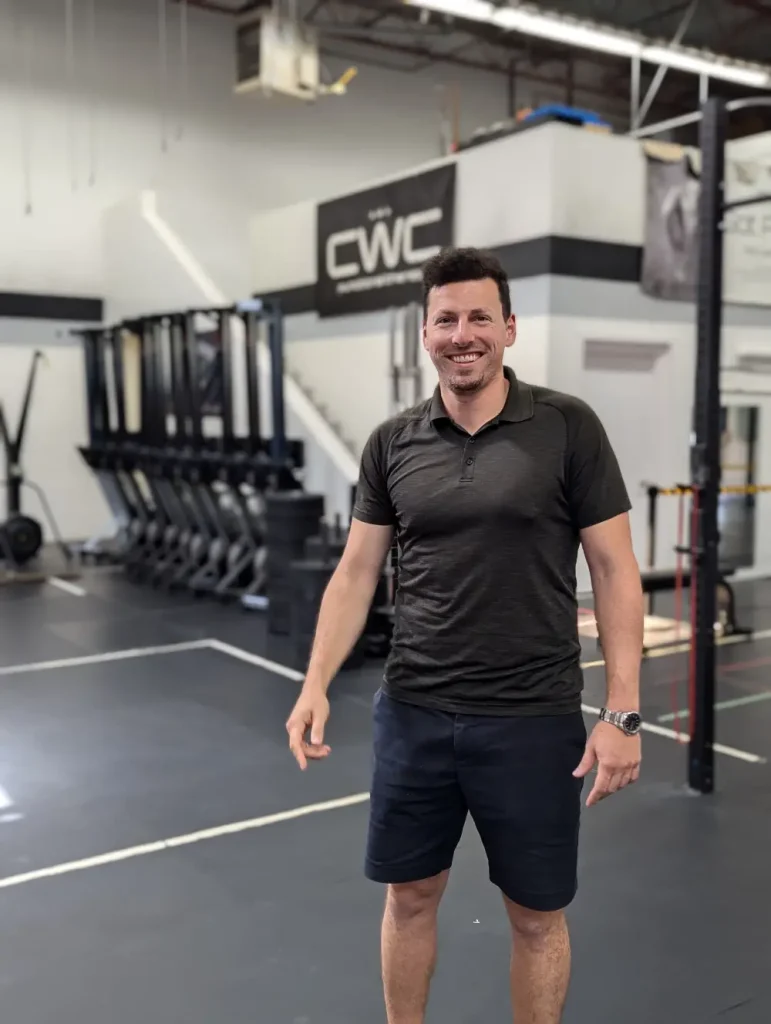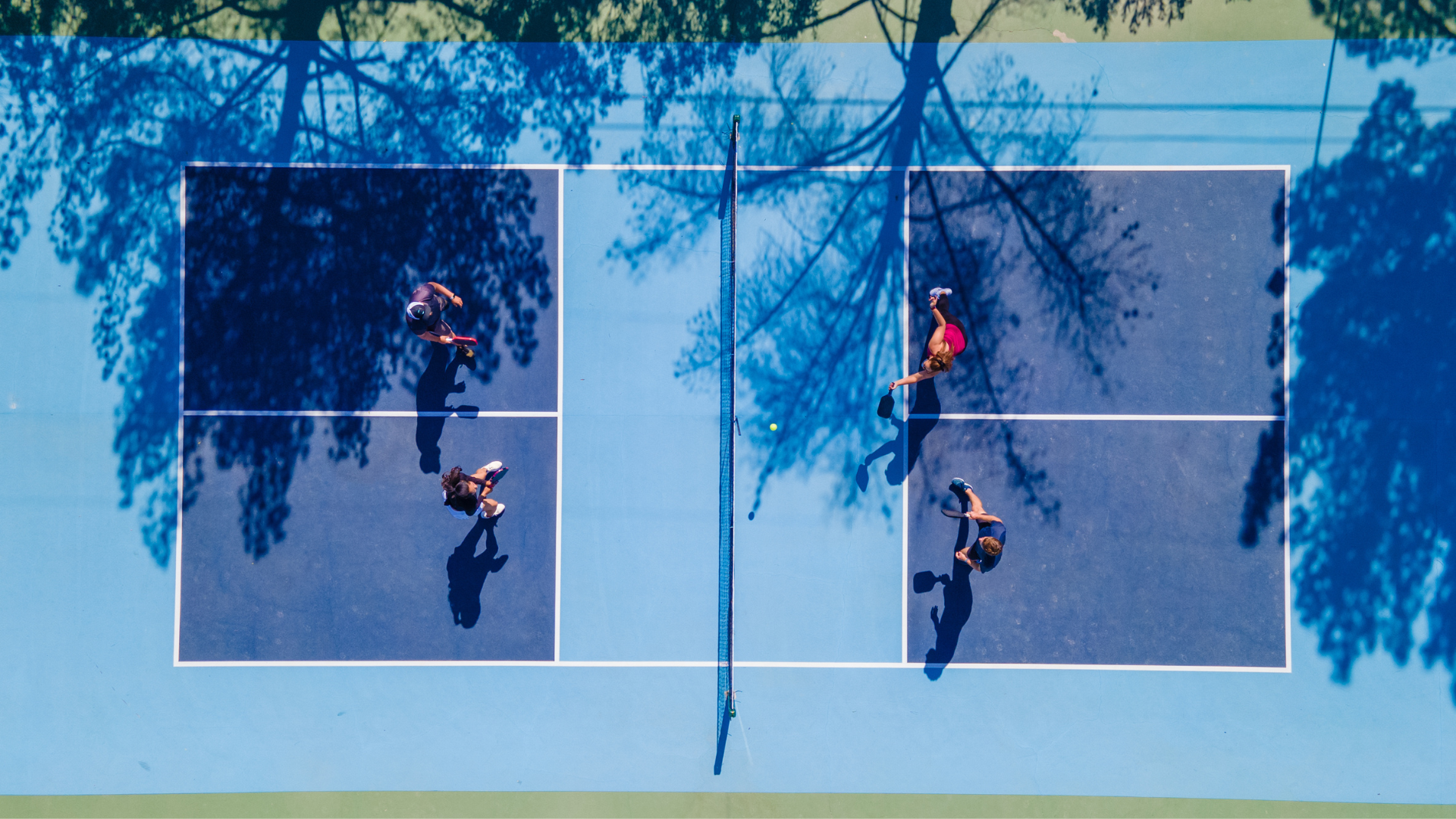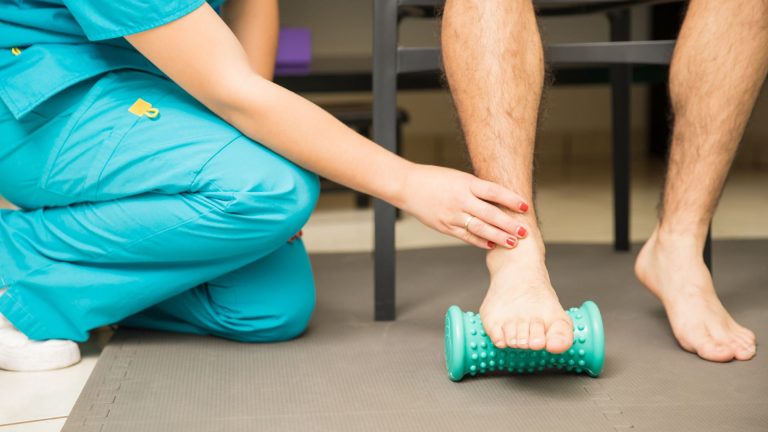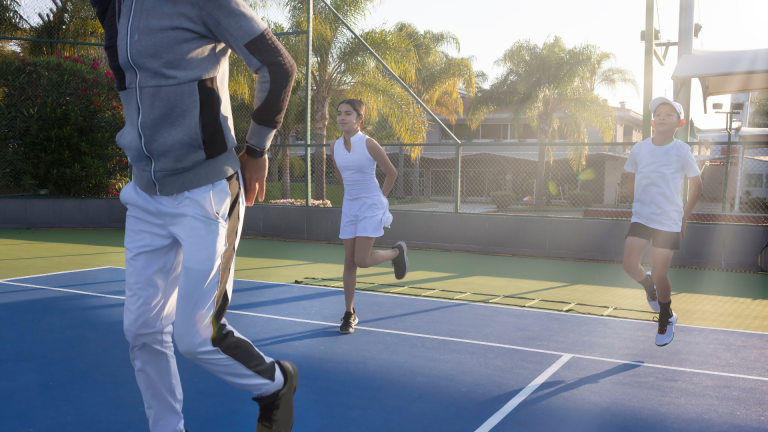Everything You Need to Know About Pickleball Injury Prevention and Getting Started
You’ve got your paddle, your court shoes, and a competitive spirit. But are you prepared to stay in the game? Pickleball may be low-impact, but it’s not risk-free. Here’s your essential pickleball injury prevention guide to keep you in the game and getting started the right way.
Whether you’re new to the game or looking to improve, understanding the basics of warm-ups, good form, and equipment can make a big difference. You’ll discover how these simple steps can keep you on the court and playing your best.
Getting started with pickleball is easy if you focus on these key areas. Learn what you need to do to play safely and keep having fun. This article will set you on the right path to enjoying this exciting game while staying injury-free.
Want to stay injury-free and enjoy every match to the fullest?
At Coquitlam Wellness Center, our expert physiotherapists can help you boost performance, prevent injuries, and recover faster.
Book your appointment today and keep your pickleball game strong and pain-free!

Getting Started with Pickleball
Pickleball combines elements of tennis, badminton, and ping-pong. It’s easy to learn and requires only basic gear. Understanding playing rules and scoring is key for beginners aiming to enjoy the game. Even if you already started your journey with pickleball, consider checking out this short beginner pickleball guide to maximize your performance on the court.
Understanding the Game
Pickleball is a paddle sport played on a court similar to a doubles badminton court. It uses a paddle, a plastic perforated ball, and a net.
The game can be played in singles or doubles. The objective is to score points by hitting the ball over the net, aiming for the opponent’s court. Unlike tennis, the court area is smaller, making the pace accessible for beginners.
Learning the basic strokes like forehand, backhand, and serving helps get you started. It’s a social and fun game, suitable for all ages and athletic abilities. There are no complicated rules, so you will pick it up quickly.
Essential Pickleball Equipment for Beginners
Paddles: Choose a lightweight paddle. Composite paddles are often recommended for beginners. Select one with a comfortable grip to help prevent strain.
Balls: Opt for outdoor or indoor balls depending on where you’ll play. Outdoor balls are heavier and have more holes than indoor balls.
Footwear: Use court shoes with good support. They should offer grip to prevent slipping during quick movements.
Some community centers lend equipment, so check if you can try before buying. Investing in your own gear eventually ensures that you have the best fit and feel.
Pickleball Basic Rules and Scoring
Games are often played to 11 points, and players must win by two points. Only the serving team can score points.
Each play starts with an underhand serve from behind the baseline. The ball must clear the net and land in the diagonal court.
The “double bounce” rule means the ball must bounce once on each side before volleys are allowed. Volleys can only take place outside the no-volley zone, also known as the “kitchen”. These simple rules keep the game balanced and fun.
Understanding these basics allows you to start playing right away, focusing on skill improvement as you play more games.
Pickleball Technique Fundamentals
Learning pickleball serves, volleys, and positioning on the court will improve your game and help prevent injuries. The right techniques can lead to smoother, more effective play.
Proper Grip and Stance
A good pickleball grip starts with holding the paddle like a handshake. Keep it firm but relaxed to control your shots. The Continental grip is common and versatile.
Your stance is equally important. Stand with feet shoulder-width apart. Slightly bend your knees. This ready position helps you react quickly. Lean forward a bit to stay balanced and agile. Comfort and flexibility are key.
Try different stances to find what suits you best. Experimenting might improve your game significantly.
Stroke Mechanics
Basic strokes in pickleball include the serve, forehand, and backhand. For a serve, keep your arm steady, and swing underhand. Aim for a smooth, controlled motion.
With a forehand stroke, use your dominant hand. Swing the paddle across your body with your wrist firm. Keep your eyes on the ball.
The backhand stroke is similar but requires a different grip adjustment. Hold the paddle across your body with both hands if needed for stability. Practice these regularly to gain confidence.
Footwork and Positioning
Effective footwork keeps you in control on the court. Use small, quick steps to reach the ball. Always be ready to move in any direction.
Position yourself near the center of the court. You can reach more balls this way. Track the ball’s direction and adjust your position accordingly.
Stay light on your feet and maintain balance. Anticipate your opponent’s moves for better gameplay.
Mobility for Beginners
Being mobile on the court helps you adjust quickly. Start with light exercises to improve movement, like jogging or jumping rope. This builds endurance and agility.
Practice lateral shuffles and side steps. These moves help in reaching balls on either side. As your skills grow, your mobility will naturally improve.
Keep practicing these techniques at a pace comfortable for you. Consistent practice leads to better performance and fewer injuries.
Injury Prevention Strategies
To prevent injuries in pickleball, you’ll want to focus on warming up and cooling down, building strength and flexibility, and using proper technique. These strategies help reduce the risk of common injuries and keep you playing safely.
Warm-Up and Cool-Down
Start with a warm-up to prepare your body for activity. A good warm-up increases blood flow to your muscles and joints. Begin with light cardio, like jogging or jumping jacks, for five to ten minutes. This activity raises your body temperature and improves your muscle elasticity, making them less prone to injury.
After playing, a cool-down is crucial. It helps return your heartbeat to normal and prevents stiffness. Stretch your muscles gently, focusing on the legs, arms, and back. These stretches help remove lactic acid and reduce soreness. Holding each stretch for at least 20-30 seconds can be beneficial.
Strength and Flexibility Training
Building strength and flexibility is an important part of pickleball injury prevention. Strong muscles can handle the demands of the game better, while flexibility improves your range of motion. Strength training exercises like squats, lunges, and planks can be effective. Aim for at least two to three sessions per week to build endurance.
Flexibility exercises like yoga or pilates can help keep your muscles supple. Incorporate these stretches into your routine to avoid muscle strains. You don’t need to do anything too complicated; basic stretches focusing on major muscle groups work well too. A few minutes of stretching, a few times a week, can make a big difference.
Using Proper Technique
Using the right technique is essential to reducing injuries during play. Incorrect form can lead to strains or other injuries. Pay attention to your posture and footwork. Your knees should be slightly bent, and your stance should be balanced and ready to move quickly.
Practicing proper techniques, like the right way to hold and swing your paddle, can prevent overuse injuries, particularly in the shoulder and elbow. Consider taking a few lessons or watching tutorial videos to learn and practice these techniques. Doing so helps ensure your safety and effectiveness on the court.
Common Pickleball Injuries and Management
Pickleball is a fun and active sport, but like any physical activity, it comes with injury risks. Knowing common injuries and how to manage them is important for staying safe and enjoying the game.
Types of Injuries
In pickleball, you’ll often see ankle sprains and knee pain. These happen because of quick stops and starts. Shoulder strains can occur from swinging the paddle repeatedly. Achilles tendonitis might affect players due to quick movements.
Another common injury is wrist sprains from falls. Tennis elbow, a pain on the outer side of the elbow, can result from repetitive hitting. Being aware of these injuries helps you recognize early signs and take steps to prevent them.
First Aid and Treatment
Treat injuries quickly to prevent further damage. Use the R.I.C.E method: Rest, Ice, Compression, and Elevation. Rest the injured area to avoid strain. Apply ice packs for 20 minutes every few hours to reduce swelling. Use compression wraps or braces to support the area. Elevate it above heart level to decrease swelling.
Over-the-counter pain relievers like ibuprofen can ease pain and swelling. If pain persists, you should seek medical advice for proper care.
Recovery and Return to Play
Recovery times vary based on the injury’s severity. Listen to your body and avoid rushing back. Start with gentle exercises to regain strength. Stretching and balance exercises help restore mobility. Always warm up before playing again.
Consider using protective gear, like braces, until fully healed. This helps prevent re-injury. Stay mindful of your body and stop playing if you feel any pain. Consulting a physical therapist can aid in a safe return to playing pickleball.
Pickleball Safety Tips
To ensure a safe pickleball experience, focus on the condition of the court, keep equipment in good shape, and be aware of the weather and surroundings. Taking these steps will help prevent injuries and allow for enjoyable play.
Pickleball Court Safety Tips
Keep the court clean and free of debris. Sticks, leaves, or small stones can cause you to trip or slip. Inspect the surface for cracks and uneven areas before starting. If there are any issues, notify the facility manager.
Choose shoes that provide good grip and support. Proper footwear reduces the risk of ankle sprains and slips. Make sure the net is securely fastened. A loose net can cause accidents if you or someone else runs into it.
Maintaining a safe court environment helps ensure fun and injury-free play. Simple checks can make a big difference in your game experience.
Pickleball Equipment Maintenance
Regularly inspect your paddle for signs of wear. Cracks or chips can affect your gameplay and safety. Replace any damaged paddles promptly. Check the grip to ensure it provides enough hold. Re-gripping might be necessary if it becomes worn.
Examine the balls for cracks or warping. Damaged balls can behave unpredictably, increasing the risk of accidents. Always have a few backup balls handy to replace damaged ones quickly.
Keeping equipment in good condition not only improves your game but also makes playing safer for everyone involved.
Environmental Considerations
Be mindful of the weather when playing outside. Wet courts are slippery, and extreme heat can lead to dehydration or heatstroke. Bring water to stay hydrated and take breaks when needed. Dress appropriately for the weather, using layers if necessary.
Playing at night requires good lighting. Make sure the court is well-lit to avoid mishaps. Pay attention to surrounding elements, like fences and other players.
Awareness of the environment ensures not only your safety but also that of your fellow players. Adapting to conditions improves your experience and keeps the game enjoyable.
Conclusion
Pickleball is a great way to stay active and have fun. To keep enjoying the game, always warm up properly and use the right equipment. Pay attention to your body and take breaks when needed.
Remember to practice drills and exercises that improve strength and flexibility. This will help in reducing the risk of injuries. Stretching is also an important part of staying fit for the game.
Wearing the right shoes can make a big difference. Look for comfortable shoes with good support. Protective gear like wrist guards and knee pads can help keep you safe during play.
Nutrition Tip: Stay hydrated by drinking water before, during, and after playing. Eating balanced meals can also fuel your body for better performance on the court.
If you’re in Coquitlam, BC, consider visiting us at the Coquitlam Wellness Centre. We’re here to support your health and fitness journey with expert advice and physiotherapy services.




